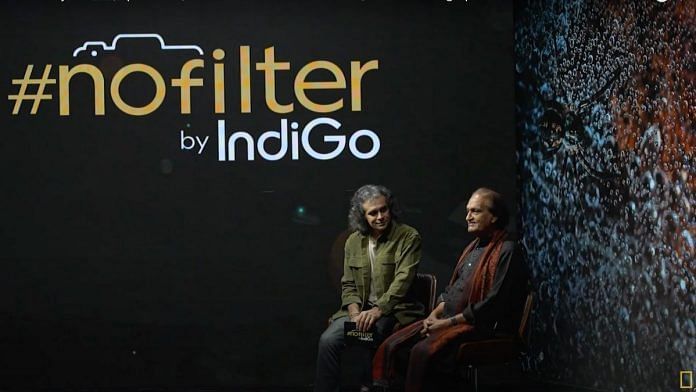New Delhi: Filmmaker Imtiaz Ali and photographer Raghu Rai are on the hunt for visual stories from Delhi—stripped of filters, stickers, and the array of photo editing software that blur the lines between reality and fiction. The director of Rockstar and Jab We Met and the Padma Shri award-winning photographer are returning to the basics in National Geographic India’s latest reality television mini-series, #nofilter by IndiGo.
The format is simple—as judges, they will mentor and choose the best photo essay from nine participants selected from a pool of over 90,000 applicants.
“If a story or photo is without filters, only then can it be embellished and improved. If the raw story lacks power, nothing can make it good,” said Ali.
The winner will be featured on National Geographic website.
Nat Geo, inspiring the dreamers
The location of the photography contest is Delhi. The show aims to celebrate the unfiltered beauty of the capital without relying on the tools offered by SnapChat, Instagram, and TikTok.
“The filter is a tool in every monkey’s hand. You should develop your talent. The show encourages photographers to search for the power of raw images,” said Ali.
For decades, photographers like David Doubilet and Steve McCurry captured the imagination of readers, bringing the fantastic and the obscure to the homes of readers and capturing key historic moments—from the crumbling of the Twin Towers of New York’s World Trade Centre to US Marines helping citizens topple a statue of Saddam Hussain in Baghdad.
In India, a generation of photographers, including novice, amateurs, and professionals, have nurtured dreams of being featured within the magazine’s iconic yellow frame. National Geographic has cashed in on this aspiration multiple times.
As the world of photography evolves, the stories behind the lens become increasingly significant. Renowned photographer Raghu Rai emphasizes that while photos can’t be taken again, they serve as powerful evidence of history, capturing moments that define our cultural narrative.
In 2009-10, the organisation produced a non-fiction television series, Nat Geo’s Most Amazing Photos,which followed the magazine’s photographers on various assignments. A couple of years later, they rolled out a reality show, Nat Geo Covershot,taking participants to different parts of India, including Mumbai and the Northeast, and even to Majuli, the world’s largest river island in Assam’s Jorhat district.
The participants had to click the perfect shot at various locations they were sent to. The judges included filmmaker Nagesh Kukunoor and National Geographic’s contractual photographer, Ami Vitale. The next season had filmmaker Abhinay Deo, who directed Delhi Belly, and photographer-artist Samar Singh Jodha.
“I have been inspired by the photographs I have seen in the National Geographic magazines throughout my life,” said Ali. “I was brought in to assess the storytelling aspect of the contestants’ photographs.”
For a smartphone generation
The subject of the photo essays varies in each episode. From some of Delhi’s iconic food locations blended with the sacred, like Bangla Sahib Gurdwara, to women in uniform and generations, the episodes are designed to challenge the genres that the photographers are accustomed to. Each episode is roughly 15 minutes long and immediately delves into the photographers’ experiences while shooting the photo essays. Three contestants are featured in each episode, each given their location and the challenge of the day.
The reality show aims to capture the attention of a smartphone generation accustomed to consuming bite-sized entertainment. However, it might feel a bit rushed because the experiences and challenges of the contestants are not conveyed in more detail.
The key focus in every episode is not only technical finesse but also how well the contestants can perform under the pressure of using a technique they have never used before or in an unexplored space. The show welcomes unconventional approaches, encouraging photographers to think outside the box.
“After all, a photograph represents a point of view,” said Ali, who is happy to judge contestants based on what he does and knows best—finding the story in the most unusual places.
Having studied at Delhi University’s Hindu College, Ali is at ease in the capital as he is inMumbai, where he lives. He recently posted photos reminiscing his time as a student at his college hostel and remains one of the best chroniclers of Delhi through his films, such as Rockstar and Love Aaj Kal. That’s probably why viewers get a bird’s eye view of various landmarks in the city, some well-known and others relatively hidden, like Kumhar Gram, in the show.
“For me as a viewer, the most important thing is where the camera can take me. Places I have not been to, places that I hope to go, or I know I will never visit. That is when I am happiest as a viewer, and I want to bring that experience to the audience through my films,” said Ali.






